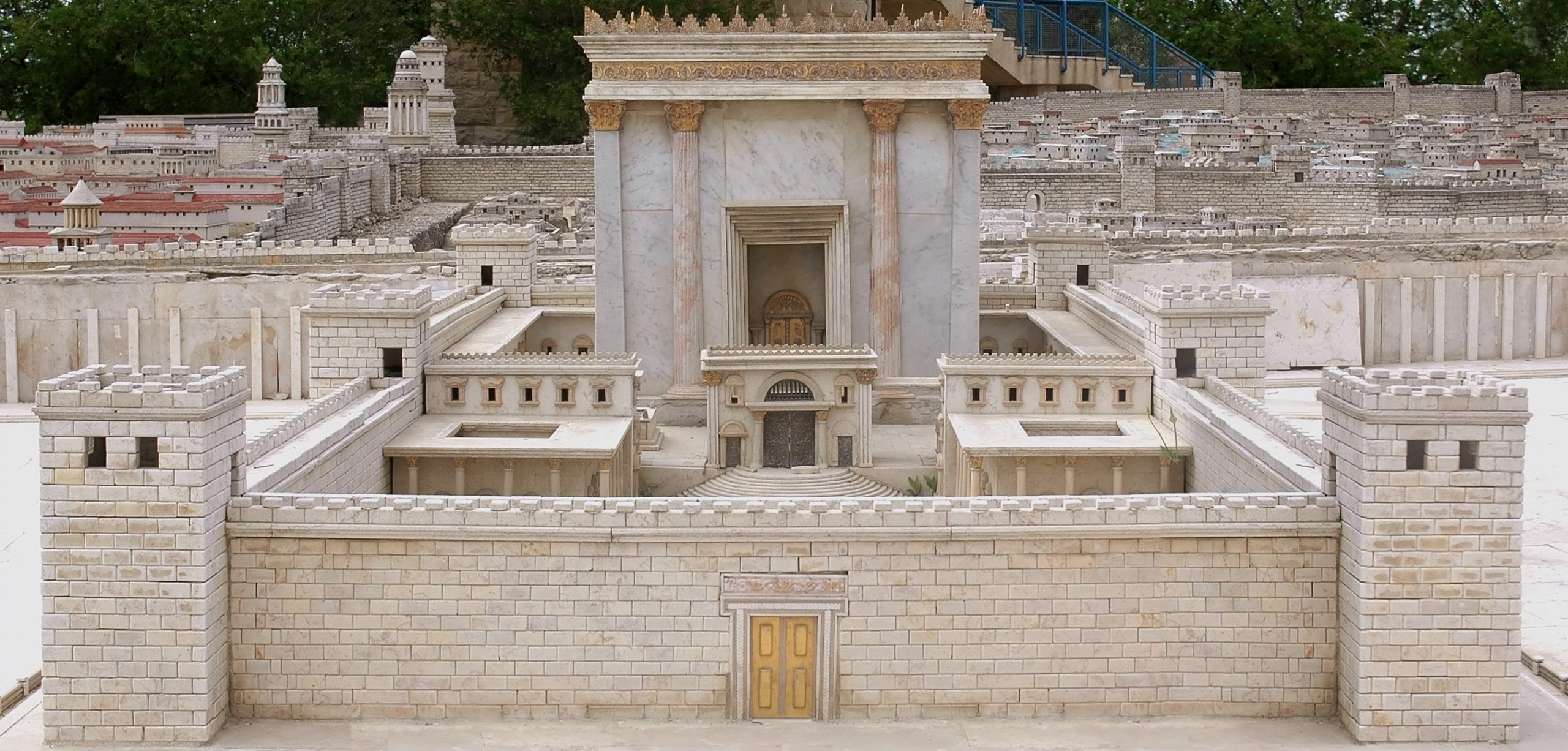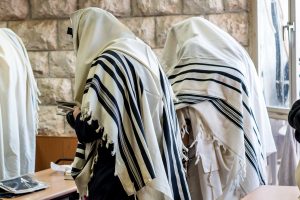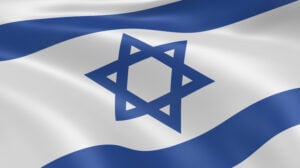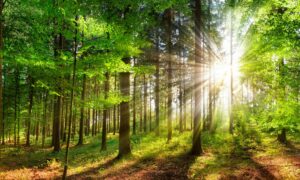
The Second Temple stood in Jerusalem from 516 BCE to 70 CE and was the focal point of Jewish religious and national life, as well as the most magnificent and important building in Jewish history. It was the meeting point between the Jewish people and the Divine, where sacrifices were offered, sins were forgiven, harvests were celebrated, musicians heralded the glory of G-d with ceremonious instruments, and kohanim (priests) conducted religious rituals proscribed in the Bible.
All that physically remains of the Second Temple in Jerusalem today is the “Western Wall“, known in Hebrew as the “Kotel.” It is the most significant Jewish site in the world, visited by millions of people every year from around the world who wish to pray and to place notes for G-d in between its ancient stones.
The Temple continues to hold immense significance for Jews. It is an integral part of Jewish heritage and history, mentioned in our daily prayers (which we say while facing in the direction towards where it once stood), and a part of our artistic imagination.
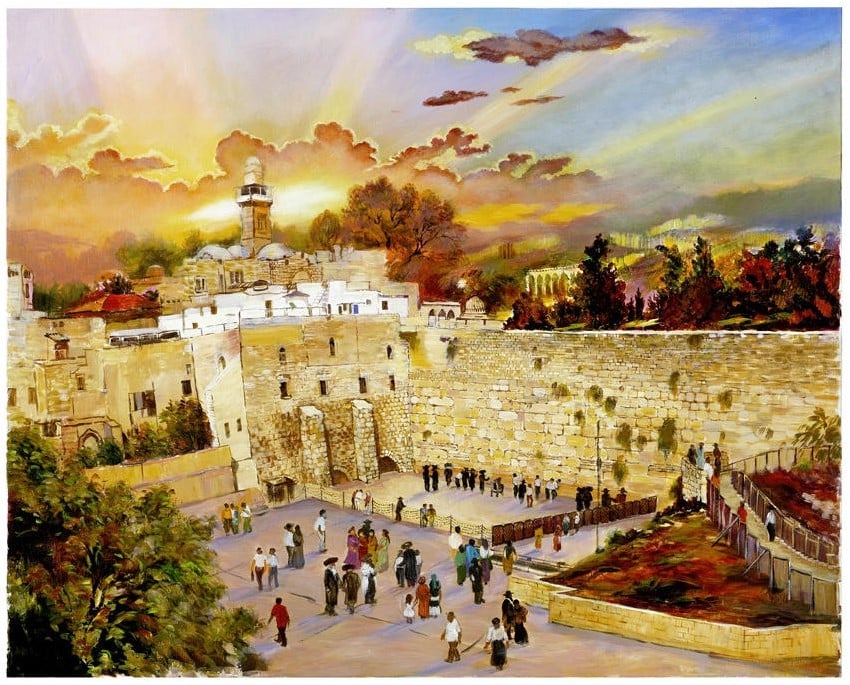
Origins of the Temple
According to the Biblical text, we are first introduced to Mount Moriah, today the Temple Mount, with the story of the Binding of Isaac. “Take your son, your only son whom you love, Isaac, and go to the land of Moriah and offer him there as an offering on one of the mountains which I will tell you” (Genesis 22:2). Abraham called the place “the mountain where G-d is seen” (Genesis 22:14).
It was only fitting then that many years later the Jewish Temple would be built on this holy ground, officially representing the continuation of the special relationship between G-d and the Jewish people. However, when the people wavered from the values that this level of relationship required, the Divine Presence ceased to reveal itself. The result was that after standing for hundreds of years, the First Temple was destroyed by the Babylonians in 586 BCE, with the Jews sent into exile. The Jews repented and returned to the Land 70 years later, and immediately started building the Second Temple.
The Maccabees and the Hanukkah Story
As you may know, the holiday of Hanukkah is connected to the Second Temple. The Seleucid Greeks occupied the Land of Israel in the 2nd century BCE and banned Jewish worship and ritual practices; as one of several drastic measures against the Jews and their ability to worship, the Greeks also purposely desecrated the Holy Temple in Jerusalem and made it unusable. The Maccabees, Judean resistance fighters, gained control of the Holy City of Jerusalem, re-sanctified the Temple, and re-established Jewish sovereignty in the Land of Israel.
We celebrate the Maccabees’ victory till this day with the holiday of Hanukkah, and we light menorahs to commemorate a miracle that allowed one jug of oil to light the Temple’s menorah for eight nights instead of one, just in time for more kosher oil to be procured.
The menorah was one of the key ritual items in the Temple and necessary for Jewish worship and sanctifying the holy space.
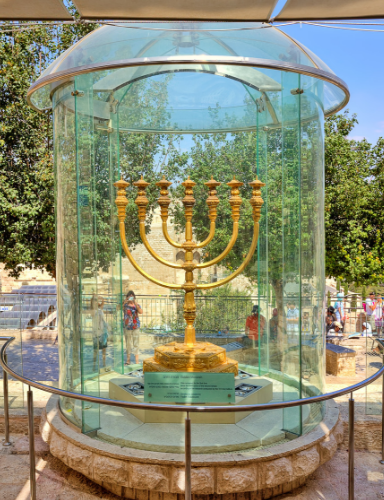
Expanding the Majesty of the Temple
Around the first century CE, King Herod – a Roman-appointed Jewish governor of Judea, which at this point was part of the Roman empire – made significant additions and renovations to the Temple and the surrounding area. An entire grand complex was created, widening the area of the Temple Mount with support walls and various courtyards. This was when the Temple got its iconic, magnificent look still known and admired today.
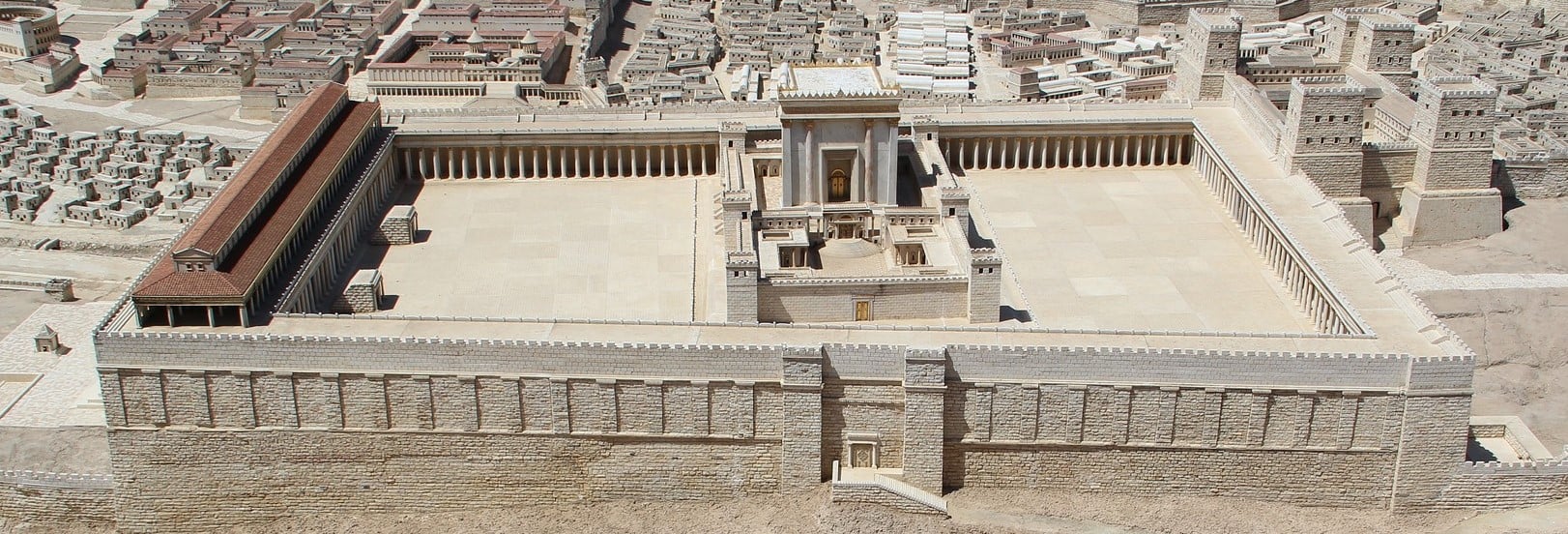
Temple Ritual Items
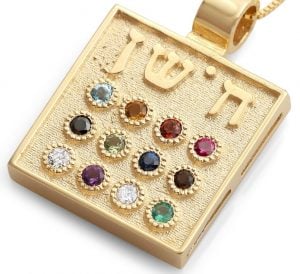
In addition to the famous seven-branched Temple Menorah, there were several other important, special items necessary for Jewish worship: the Ark of the Covenant, the altar for sacrifices, Priestly garments including the Hoshen (breastplate) of the High Priest, and incense that was burned daily and made of 11 spices: cinnamon, muscat nut bark, costus, saffron, spikenard, cassia, myrrh, frankincense, galbanum, clove, and balsam.
Although all original artifacts were destroyed or looted during the Roman siege on Jerusalem and destruction of the Holy Temple, detailed descriptions have survived and have been used by Jewish artists and Judaica designers to create various artistic representations.
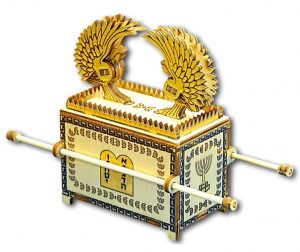
The Destruction of the Temple
Roman armies destroyed the Temple in 70 CE as part of their siege on Jerusalem and campaign to quash Jewish rebellion and disperse Jews from the Holy City. To this day the Temple has not been rebuilt again, and all that remains of the Temple complex are some of the outer support walls built by King Herod.
The Western Wall
The main part of this remaining support structure is known as the Western Wall, or in Hebrew the Kotel. Throughout the generations since the Temple’s destruction, the Western Wall has been the closest accessible remnant to the Temple Mount. Interestingly, the exposed, outdoor section of the Western Wall that is familiar to Jews today is just a small part of the whole Western Wall – it’s 187 feet long, while the entire length is actually 1,600 feet! The remainder of the Western Wall continues underground beneath the streets and houses of the Old City of Jerusalem.
Today, the Western Wall is at the same time a symbol of spiritual exile, as well as one of hope and longing for the future redemption of Israel.

Connect more deeply with Second Temple history with our Temple-themed gifts from the Land of Israel! Get inspired with some of our favorites and bring ancient Jewish heritage into your home.
